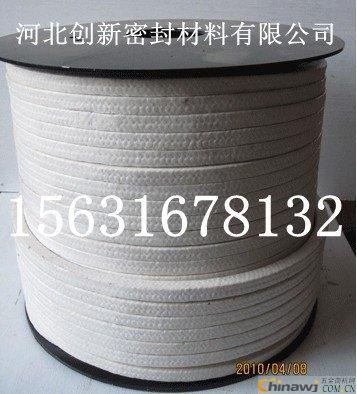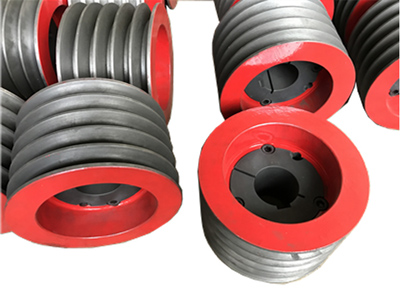Common valve action and precautions for use
A pulley is a wheel on an axle or shaft that is designed to support movement and change of direction of a taut cable. The supporting shells are called blocks.
A pulley may also be called a sheave or drum and may have a groove or grooves between two flanges around its circumference. The drive element of a pulley system can be a rope, cable, belt, or chain that runs over the pulley inside the groove or grooves.
QFAP has specialized in producing various kinds of pulleys more than 10 years, could help to design or produce the pulley according to your requirements. (OEM accepted)
Materials: Ductile iron, Grey iron, Steel Castings, Aluminum
Surface treatment: Painting, Powder coating, zinc plating, hard anodizing, only oiled
Main of our customers is from USA, CANADA, AUSTRALIA and German
Belt Pulley,Timing Pulley,Rope Pulley,Nylon Cable Pulley SHAOXING QIFENG AUTO PARTS CO., LTD. , https://www.sxqfap.com
Common Valve Functions and Usage Precautions (Hebei Innovation Sealing Material Co., Ltd.)
Valves are essential components used to control the flow of media in chemical pipelines. This guide focuses on practical applications and highlights the structural principles, which can be further explored in technical reference books. A valve typically consists of three main parts: the valve body, the actuation mechanism, and the valve cover. This article provides an overview of common valve structures and important guidelines for their proper use.
First, types of valves:
1. Based on function: Shut-off valves, regulating valves, diverter valves, check valves, and safety valves.
2. Based on actuation method: Manual valves, automatic valves, and self-acting valves.
Second, the role of valves:
1. On/Off Function – to cut off or allow fluid flow in the pipeline.
2. Regulation Function – to adjust the flow rate within the pipe.
3. Throttling Effect – to create a pressure drop after the fluid passes through the valve.
4. Additional Functions – such as automatic opening/closing, maintaining pressure, and steam drainage.
Third, key parameters of valves:
- PN (Nominal Pressure): The maximum pressure the valve can handle.
- DN (Nominal Diameter): The size of the pipe it connects to.
- TN (Temperature Range): The allowable temperature range for the medium.
Fourth, pre-installation inspection:
1. Check for defects like blisters, cracks, or corrosion on internal and external surfaces.
2. Ensure the valve seat is securely attached to the body, and the sealing surface is intact.
3. Verify that the stem moves smoothly without bending or thread damage.
4. Inspect the packing and gasket for aging or wear.
5. Confirm the valve opens and closes freely.
Fifth, common issues during valve operation:
1. Leaks at flange or threaded connections.
2. Packing leaks, gland leaks, or stem jamming.
3. Internal leakage between the valve plug and seat.
Sixth, characteristics and usage precautions of common industrial valves:
(a) Plug Valve (Cock)
Features: Suitable for temperatures below 150°C and pressures under 1.6 MPa. It has a simple structure, quick operation, and low fluid resistance.
Precautions:
1. The square end of the stem indicates the closed position; align with the valve body direction.
2. Use a special wrench to avoid slipping and potential accidents.
3. Before opening, inspect the valve and slowly open it, avoiding standing directly in front of the seal. Wear a protective mask when handling acidic or alkaline fluids.
(b) Ball Valve
Similar to a plug valve, but uses a spherical closure element with a bore. It is suitable for two-way flow systems and offers good sealing.
Precautions:
Same as plug valve. For jacketed ball valves, ensure steam is applied to prevent crystallization before operation. Never force the valve open if the medium hasn’t fully melted.
(c) Butterfly Valve
Uses a rotating disc to control flow. Available in manual, pneumatic, and electric versions.
Features: Simple design, fast operation, and low resistance. Not suitable for high-temperature or high-pressure environments.
Precautions:
1. Rotate the disc 90 degrees only.
2. Avoid forcing the valve open; use a special wrench if needed.
3. Do not remove the handwheel or use an adjustable wrench.
(d) Globe Valve
Widely used in chemical production. It controls flow by lifting a disk via a stem.
Features: Compact design, easy to adjust flow, and reliable sealing. Not suitable for viscous or crystallizing media.
Precautions:
1. Check for leaks in the packing before use.
2. Use a special wrench if necessary, but avoid forcing it.
3. Drain condensate from steam lines before opening to prevent damage.
(e) Gate Valve
Controls flow by raising or lowering a gate perpendicular to the flow.
Features: Low fluid resistance, smooth flow, and easy to adjust. However, it has a complex structure and slower operation.
Precautions:
1. Do not apply excessive force when operating.
2. Use a wrench if needed, but avoid damaging the stem.
3. Monitor the sealing area for leaks.
(f) Throttle Valve
Also known as a needle valve, it has a tapered or parabolic plug to regulate flow.
Precautions:
1. Check threaded connections for looseness.
2. Open and close slowly to avoid damaging the sealing surface.
(g) Check Valve
Automatically opens and closes based on pressure difference to allow one-way flow.
Precautions:
1. Ensure the arrow direction matches the flow direction.
2. Avoid using in media prone to crystallization.
(h) Safety Valve
Protects equipment by automatically releasing excess pressure.
Precautions:
1. Only use within the test period.
2. Keep the shut-off valve open for effective operation.
3. Regularly test and clean the valve.
(i) Fluoroplastic-Lined Rubber Valve
Used in corrosive environments like acids and bases.
(j) Steam Trap
Automatically removes condensate while preventing steam loss.
Precautions:
1. Use bypass to drain condensate before operation.
2. Be cautious of steam burns.
(k) Sampling Valves
Designed to collect samples for analysis.
Precautions:
1. Double-opening valves require sequential operation.
2. Flange clamp valves use a conical seal for sampling.
3. Jacketed valves must be preheated before use.
(Source: Hebei Innovation Sealing Material Co., Ltd.)

